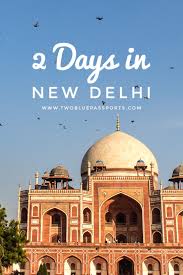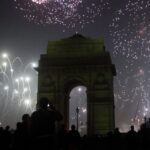Why Should You Visit New Delhi
New Delhi, the capital city of India, is a vibrant metropolis that beautifully melds the ancient and the modern. As a city with a rich history spanning over a millennium, it boasts a stunning array of architectural marvels, from Mughal-era fortresses to modern-day landmarks. New Delhi is not just a political hub; it’s a cultural heartland, offering an array of sensory experiences through its diverse cuisine, bustling markets, and colorful festivals. The city’s energy is infectious, its streets brimming with stories waiting to be discovered. Visiting New Delhi is an adventure, an opportunity to immerse yourself in the depth of India’s heritage, spirituality, and tradition. Take a look at the full What to do in New Delhi guide
Day 1
Begin your journey through New Delhi by exploring its historical treasures. The first day is all about delving into the city’s rich past and iconic landmarks. You’ll traverse through centuries of history, witnessing the architectural grandeur and the cultural depth that defines New Delhi. Each site is a chapter from the past, telling stories of empires, spirituality, and the city’s evolution through time.
Red Fort (Lal Qila)
The Red Fort is a powerful symbol of India’s sovereignty and a UNESCO World Heritage site. Built by Emperor Shah Jahan in the 17th century, its red sandstone walls enclose a complex of palaces, museums, and gardens. The fort’s intricate architecture and historical significance make it a must-visit. It’s not just a fort; it’s a testament to the Mughal era’s artistic and architectural prowess.
Jama Masjid
Close to the Red Fort is Jama Masjid, one of the largest mosques in India. Built by Shah Jahan, it’s an architectural marvel with towering minarets and a vast courtyard that can hold thousands of worshippers. Climbing the southern tower provides a panoramic view of the city. The mosque’s atmosphere offers a serene respite from the city’s bustle and a glimpse into its spiritual heart.
Humayun’s Tomb
Humayun’s Tomb is another UNESCO World Heritage site and a precursor to the Taj Mahal’s design. This 16th-century mausoleum, set in beautiful gardens, was built by the wife of Mughal Emperor Humayun. Its architectural elegance and the peaceful gardens surrounding it make it a beautiful spot for reflection and admiration.
India Gate
India Gate is a war memorial located along the ceremonial Rajpath. It’s a tribute to the Indian soldiers who died during World War I. The eternal flame burning beneath it, Amar Jawan Jyoti, honors the unknown soldiers. India Gate is also a popular evening spot for locals and tourists alike, offering a pleasant environment for a leisurely stroll.
Qutub Minar
End your day at Qutub Minar, a soaring victory tower dating back to the 12th century. It’s the tallest brick minaret in the world and a fine example of Indo-Islamic architecture. The complex includes various other ancient and medieval structures, each with their own history and artistry. It’s a site that beautifully encapsulates Delhi’s historical and architectural legacy.
Day 2
On your second day, dive into New Delhi’s cultural and modern side. This day is about experiencing the city’s vibrant lifestyle, its artistic expressions, and its lush green spaces. You’ll explore the blend of tradition and modernity that characterizes New Delhi, from its bustling bazaars to its tranquil gardens and impressive museums.
Lotus Temple
Start your day at the Lotus Temple, a Bahá’í House of Worship famous for its stunning flower-like design. Open to all, regardless of religion, it’s a place for peace and meditation. The temple’s architectural beauty and its serene ambiance offer a unique spiritual experience in the midst of the city’s hustle.
Akshardham Temple
Akshardham Temple is a relatively modern spiritual-cultural campus that showcases traditional Hindu and Indian culture. The complex is a stunning work of art with its intricate carvings, beautiful gardens, and exhibitions. It’s not just a temple; it’s a journey through India’s spiritual heritage and architectural beauty.
Chandni Chowk
For a taste of local life, head to Chandni Chowk, one of Delhi’s oldest and busiest markets. It’s a labyrinth of narrow lanes filled with shops selling spices, clothing, electronics, and more. The area is also famous for its street food, offering a delicious array of Delhi’s culinary delights. A rickshaw ride through Chandni Chowk is an adventure in itself.
Lodi Gardens
Lodi Gardens offers a tranquil escape with its lush greenery, ancient tombs, and meandering paths. It’s a favorite spot for morning walks, picnics, and historical exploration. The gardens house tombs of the Lodi and Sayyid rulers, providing a serene historical retreat in the heart of the city.
National Museum
Conclude your visit at the National Museum, one of the largest museums in India. Its extensive collection includes artifacts from India’s rich history, from ancient times to the modern era. The museum offers an insightful overview of India’s art, culture, and heritage, making it a fitting end to your Delhi exploration.







